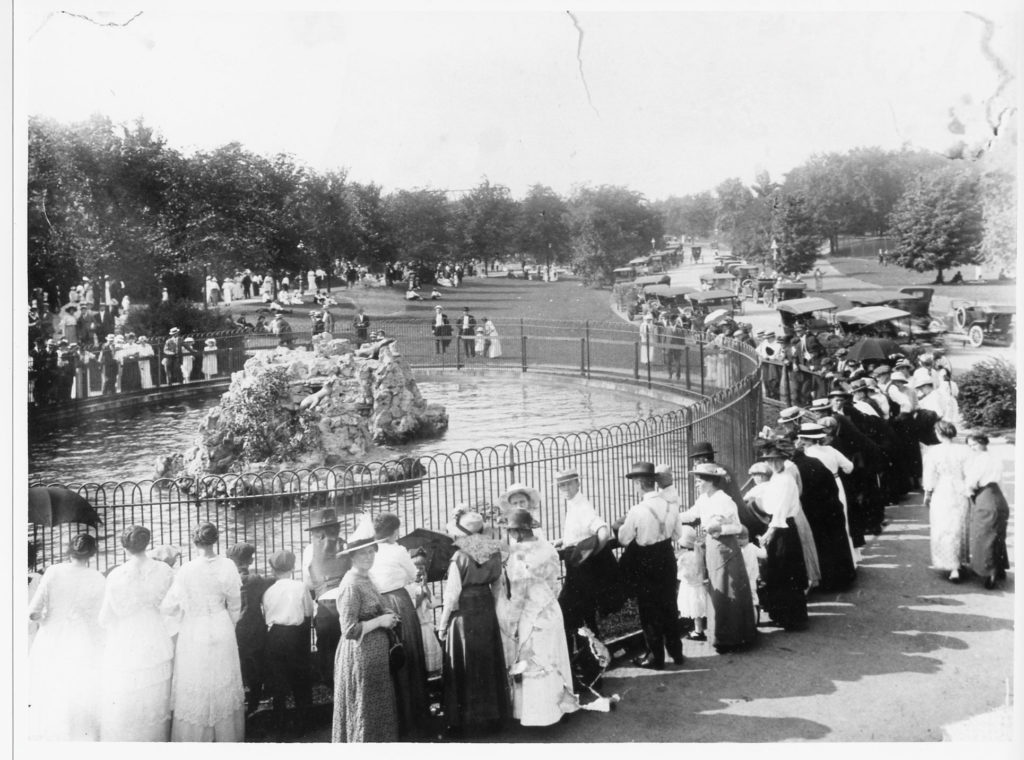
Washington Park’s zoo in about 1915; Photo courtesy of the Milwaukee County Historical Society
Did You Know Milwaukee’s First Zoo Was in Washington Park?
And it started with a small herd of deer as its first inhabitants.
BY John Gurda
First came the deer. In 1891, when the city of Milwaukee bought 125 rolling acres on the West Side for a new park, two wealthy citizens donated a small herd of deer to put on display there. Washington Park’s earliest attraction was a 1-acre paddock for the animals, which inspired dreams of a genuine “zoological garden.”
The park’s overall design was entrusted to a firm headed by Frederick Law Olmsted, America’s foremost landscape architect. Olmsted was nearing retirement at the time, but his design principles were carefully observed. Washington Park was envisioned as a “pastoral” green space, with a great meadow in its southern half and a picturesque lagoon to the north, both complementing a 15-acre native woodland.

Get tickets now for the 2024 Home + Design Awards Event!
There was a greater emphasis on active recreation in the years that followed. Washington Park’s turn-of-the-century amenities included a six-hole golf course, a racetrack that drew the region’s fastest trotting horses, a flotilla of rental rowboats on the lagoon and the growing zoo in the southwest corner.
By the time this photograph was taken in about 1915, Milwaukee’s zoo was home to nearly 800 animals, including the sea lions, elephants, camels, zebras and other specimens expected of a big-city institution. The Washington Park zoo became a favorite stop for generations of local residents and tourists alike.
Changing tastes and aggressive freeway planners put an end to it. The western edge of Washington Park, including the zoo, was sheared off for the never-completed Stadium Freeway in the late 1950s, and the entire menagerie was moved west to a wooded parcel on 100th and Bluemound, where “habitat” enclosures replaced the old model of jail-like zoos. More than 60 years later, the Milwaukee County Zoo still draws well over a million visitors a year.
TAKE A CLOSER LOOK:
- City crews planted 12,000 trees and shrubs in Washington Park in 1896-97 alone. They were still growing to maturity in 1915.
- The generous greensward between zoo exhibits was a notably Olmstedian design.
- Automobiles were becoming a familiar sight in 1915, and the majority of them were Ford Model Ts.
- Washington Park’s sea lions were relocated California residents.
- Straw boaters meant summer for our male ancestors.



